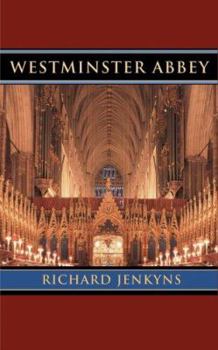Westminster Abbey
(Part of the Wonders of the World Series and Wonders of the World Series)
Select Format
Select Condition 
Book Overview
Westminster Abbey is the most complex church in existence. National cathedral, coronation church, royal mausoleum, burial place of poets, resting place of the great and of the Unknown Warrior, former... This description may be from another edition of this product.
Format:Hardcover
Language:English
ISBN:0674017161
ISBN13:9780674017160
Release Date:March 2005
Publisher:Harvard University Press
Length:215 Pages
Weight:0.68 lbs.
Dimensions:0.8" x 4.8" x 7.3"
Related Subjects
Anglican Architecture Art Arts, Music & Photography Buildings Christian Books & Bibles Church History Churches & Church Leadership England Europe General Great Britain History Protestantism Religion Religion & Spirituality Religious Buildings Specialty Travel Tourist Destinations & Museums WesternCustomer Reviews
2 ratings
Westminster Abbey - Heart of a Nation
Published by Thriftbooks.com User , 14 years ago
Westminster Abbey by Richard Jenkyns (Harvard University Press, 2005) is one of a general series of books called Wonders of the World under the general editorship of Mary Beard. Some of the other books in this series are: The Temple of Jerusalem, The Alhambra, The Parthenon, the Tomb of Agamemnon, The Colosseum, Stonehenge and the Forbidden City. Each of these books are short, Westminster Abbey is 215 pages and each is in a small compact format which makes for easy reading. Westminster Abbey not only gives a brief history of the Abbey, but talks about its importance in cultural history. In the case of the Abbey, it went from being the mausoleum of the royal family to being the burial place of a wide variety of famous people ranging from Isaac Newton to Lawrence Olivier and the location of ceremonies important to the British people ranging from the coronation of Kings and Queens to royal weddings and even the funeral of Princess Diana. It is a definite must read for all of those interested in the importance of Westminster Abbey in British History.Westminster Abbey (Wonders of the World)
An English glory of the Gothic style
Published by Thriftbooks.com User , 18 years ago
Westminster Abbey has long been a seat of royal and ecclesial significance; certainly since the time of Edward the Confessor (before the Norman Conquest), up until the most recent times (royal weddings and the funeral of Diana, Princess of Wales, perhaps the most watched funeral in history). According to the introduction of Jenkyns book, it is 'perhaps the most complex building of any kind'. It still bear the stamp of being a 'royal peculiar' - in that the clergy and ecclesial hierarchy of the abbey fall outside the standard patterns of the church, and instead fall under a more direct jurisdiction of the monarch. Its history is as impressive as its architecture. It has been a cathedral church and an abbey, a coronation church, a 'national church'; it houses Poets' Corner, the Tomb of the Unknown Warrior, the shrine of a Roman saint, and more. The national legislature (the House of Commons) has met here, and it has been both the National Archive and the National Treasury. Still, it is not as large as the French Gothic cathedrals upon which it is based, and (Henry VII's Chapel excepted) much of the art and architecture of the building, each element taken separately, can be better represented elsewhere. However, as a package whole, Westminster Abbey is second to none. Jenkyns' book on Westminster Abbey is not a tourist guide, but rather a wholistic history of the building. Looking in detail beginning with the medieval church (there were much older structures on the site, but what we come to think of as Westminster Abbey today was really born in the medieval period), Jenkyns continues chronologically through the Renaissance, Reformation, Baroque and Victorian periods. Jenkins then explores particular aspects of the Abbey overall - as a place of ceremony, as a national cathedral or shrine, as a church in and of the city, and the church as a masoleum of sorts of the famous and historical (this last chapter is somewhat out of place, put among the chronological listings). Jenkyns draws on wonderful material for a complete picture of the spirit of the place. There are poems from the Renaissance up to the twentieth century - Betjamin's portrayal of a woman visiting the Abbey during the war time is a classic example. He has historians and royals with their own reflections of events that have taken place, and material from clergy and monastics who have lived, worked and worshiped here. 'The world changes, but as a building and as a community, the Abbey continues to do what the Benedictines called the opus Dei, the work of God, to teach and preach and praise.' Jenkyns is not shy with his opinions. For example, in discussion the change in the north transept rose window, he has little good to say about Pearson's replacement of it in the restoration of the late nineteenth century. 'Pearson was a very fine architect and it is a pity (and puzzling) that he chose to blot his escutcheon in this way.' Jenkyns similarly describes others' attemp




